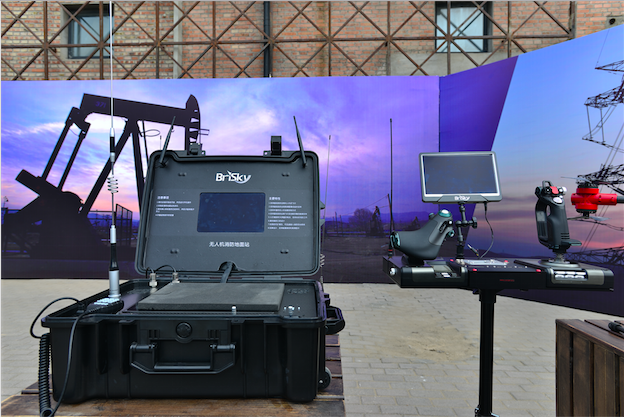
Today, the “thousands of sail away†situation presented by the drone market is somewhat reminiscent of the aeromodelling enthusiasts of a few years ago. Model aircraft players represent the imagination of a cool family of aircraft, but it has always been a niche market.
When the wave of intelligent hardware began to ebb, drones became more and more popular. The improvement of the supply chain, the constant maturity of technology, the broad imagination of industrial applications, and the rise of consumer-grade markets have filled the field with capital pent-ups and entrepreneurial hormones.
Another company launched drone products in early August. This company called Brisky chose to work with NVIDIA to give the product a more cool positioning: “see, think, and control†Artificial intelligence aircraft.
In fact, Brisky started products from the industrial market. Fire, police, inspection, etc. are all typical application scenarios for industrial drones. Take the automatic operation of unmanned aerial vehicles in agricultural production as an example: Before spraying, collect GPS information of the farmland, plan spraying times and routes, input to the ground station control system, and give instructions to the smart drone from the ground station. The spraying device can be loaded, and the spraying operation can be performed automatically. After the completion, it can be automatically returned to the take-off point. At the same time as the spraying, the progress of the spraying operation can be observed in real time through the display interface of the ground station.
Zhou Bin, co-founder of Borui Space, told Titanium that it would be technically rigorous to attempt to accomplish similar jobs in the industrial market. Brisky started the research on the flight control algorithm, the core technology of UAV in 2001. After more than ten years of development, the acquisition cost of sensors has become lower and complex algorithms can also be solved. The mature supply chain and modular design allow drones to adapt to rapid market supply and demand changes.
The newly launched carbon fiber integrated Brisky BO drone has a maximum speed of over 108 km/h. For the extreme environments that may be faced in industrial production, it also has relatively good countermeasures.
For example, in the field work area, more than two-thirds of the time, its air wind is more than five, and Brisky's wind resistance ability is the instantaneous 7-8 wind; for example, the ability to prevent rain, Brisky can do Normal operation in light rain and normal flight in moderate rain; for example, high and low temperatures, minus 15 degrees to 50 degrees, are all its scope of work; for example, for the endurance problem, after installing the proliferation module, the flight time can reach 100 minutes...
In different industrial products and different scene requirements, the types of cameras are different. Such as the binocular type, it is used for three-dimensional reconstruction; infrared type, it is specifically detected, such as fire, night goals, vital signs; and for example, the far-focus zoom camera, in the Brisky body, the standard Matching is a three-camera sensor.

Partner NVIDIA also appeared in the Brisky product launch. Built-in NVIDIA chip is to put the product on the "brain", "the drone should not just be a remote control toy, but should have the ability to work independently artificial intelligence." Zhou Bin said. He also painted a scene for the titanium media reporter:
For example, there is an open door and window. Through human settings, drones can find such doors and windows, fly in to identify and find the set of items, and then follow-up operations, and the entire process is autonomous drones to complete. In such a process, in addition to the calculations needed to avoid obstacles, autonomous detection, identification, and manipulation of such behavior also require the introduction of NVIDIA's processing platform, Jetson X.
How to make drones more intelligent?
When talking about artificial intelligence, Stephen Chen, senior sales director of NVIDIA China, mentioned three elements of implementation: the first is superior computing power; the second is the improvement of algorithms, now the most popular is called deep learning, Deep Learning. The third is the basis of deep learning - big data, with enough accumulation.
"Powerful computing power, this is our core point." When Stephen Chen talked about making Brisky Smart, "One is that we will provide a strong GPU computing platform to train Brisky; one on drones. At this end, we provide such a platform with a T-floating-point computing capability like TX1, and then let it inject this neural network into this platform to make this platform intelligent."
Stephen Chen thinks that the vision-based solution is now doing well. What is needed is a visual solution based on deep learning. For example, if you identify a car and extract the characteristics of more than a dozen vehicles, you can identify it as a certain vehicle. In addition, the connection with the database can also identify whether the vehicle has violated regulations in the past, or whether there is a need for police to intercept the vehicle. Therefore, after entering the industry, the application of drones will become more and more widespread, not just aerial photography.
Zhou Bin also believes that with NVIDIA's support, Brisky can have more interesting ideas. In addition to the active follow-up and goal follow-up that are now implemented, somatosensory interactions and voice interactions can be performed, and instructions for the drone can be achieved through specific actions and languages.
As Zhou Bin said, this is a "stuffed" market. In the field of drones, as the threshold is lowered, we are seeing more and more influxes. More and more drone products with the same dimensions, consistent indicators, and similar appearances appear. Technology, resources, and capital are also entangled. , For a time fisheye mix.
Whether drones can support a big blueprint for entrepreneurs and capital ideas still requires the market and time to give answers. (This article first titanium media, reporter / Zhang Lin)